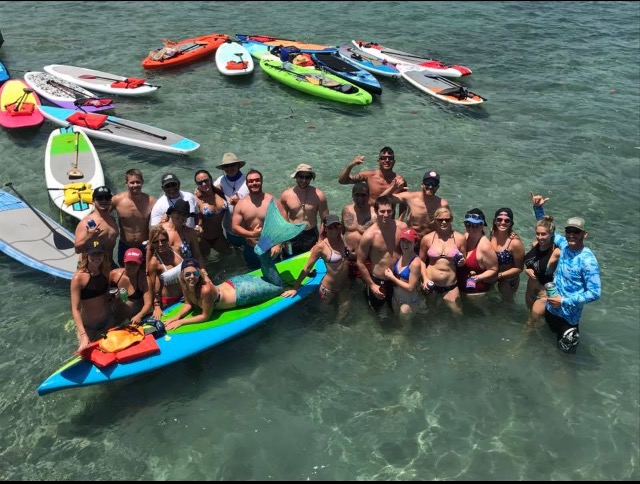by Chris Anders, Contributing Writer
I get a lot of first time buyers in my shop each week and I must share some of the basic needs of a new paddleboarder. First and most important is the board that you choose. Most new paddleboarders think that they need a shorter type of board and that may be because they rented a board and felt that was what they needed. Boards come in all shapes and sizes for a reason. Just because you’re new at SUP doesn’t mean you need the most basic board. Personally, I try to push people towards a Touring board rather than a basic planing board. Reason for this is that you will get the same stability if not better than a planing board. Touring boards are displacement hulls which can carry more weight and provide a faster ride. Many touring boards also have characteristics of race boards which is much better for speed. Longer the board the faster it will be. Make sure your boards have tie downs.

Chances are that you are going to let other people ride your board. If this is the case, get an adjustable paddle so that it fits everyone. Make sure you only buy a full carbon fiber paddle. Many companies advertise that their paddle is carbon fiber but that blade will be fiberglass. Spend the extra money and buy a good full carbon fiber paddle with an angle at the shaft and the blade.
PFDs (Personal Floatation Device) and a whistle are requirements by the U.S. Coast Guard. In my area the fine is $90 for not having the basic safety requirements. If you have a PFD that is worn around the waist, you are required to wear it at all times. You can attach your leash to these instead of your ankle. Type I & II PFDs are the most common that you will see and they do not need to be worn, however they do need to be secured on the board.
Leashes are very important to your safety. First, long leashes are for SUP Surf Boards and the coil leash is best for basic to advanced SUP. Coil leashes do not drag in the water and stay out of the way. When paddling in fast moving water, it is best to attach the leash to your waist PFD in case you need to release it in a hazardous condition. Also, check for wear at the attachment to the board. Leashes have been known to break at the attachment.
Carrying your SUP. My friends went to Rainbow Springs, Florida and had to carry their boards quite a distance to their car. For transporting your board from car to water, purchase a shoulder carry strap. They are small and easy to take with you on your board and make lugging your board long distances easy.